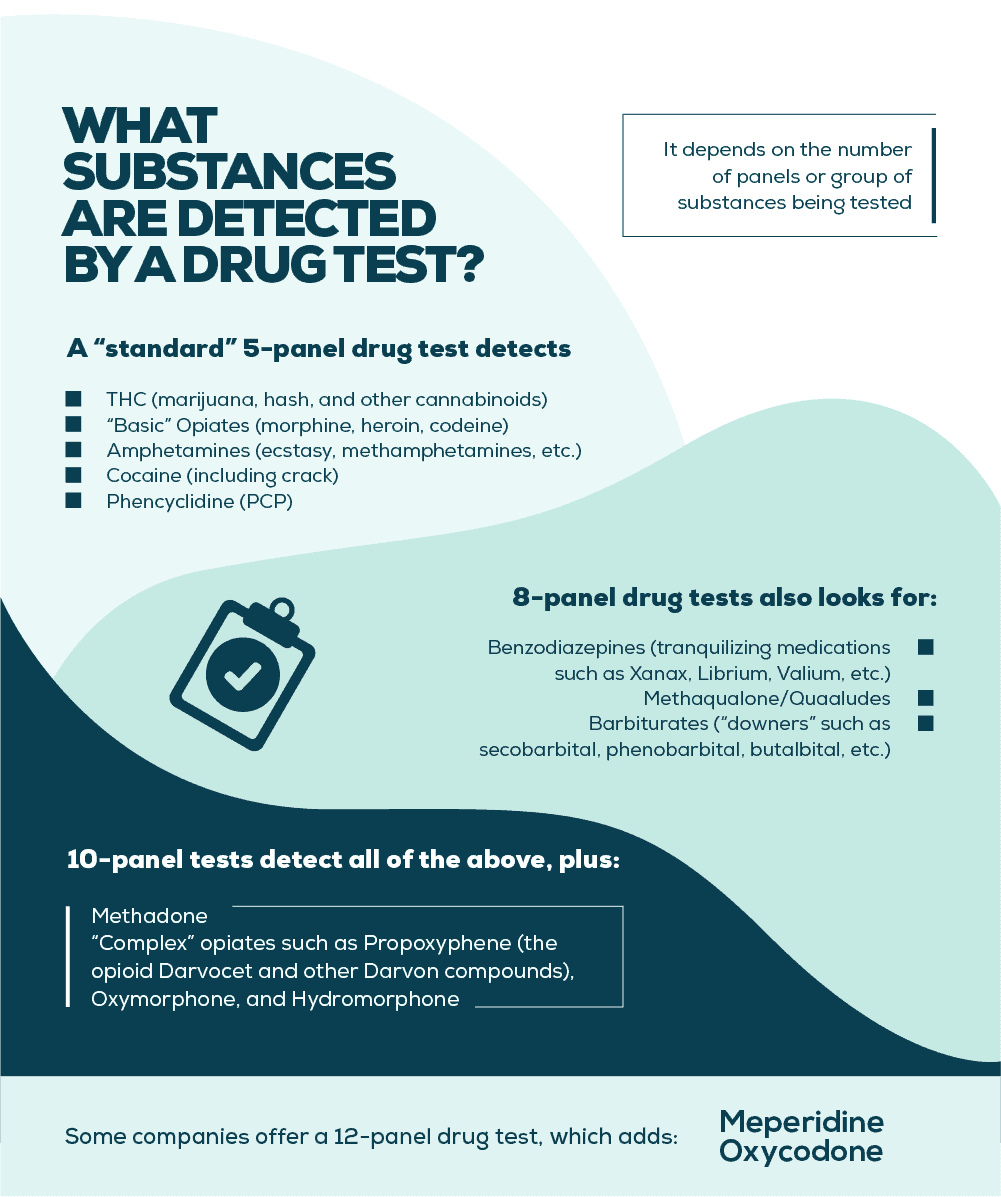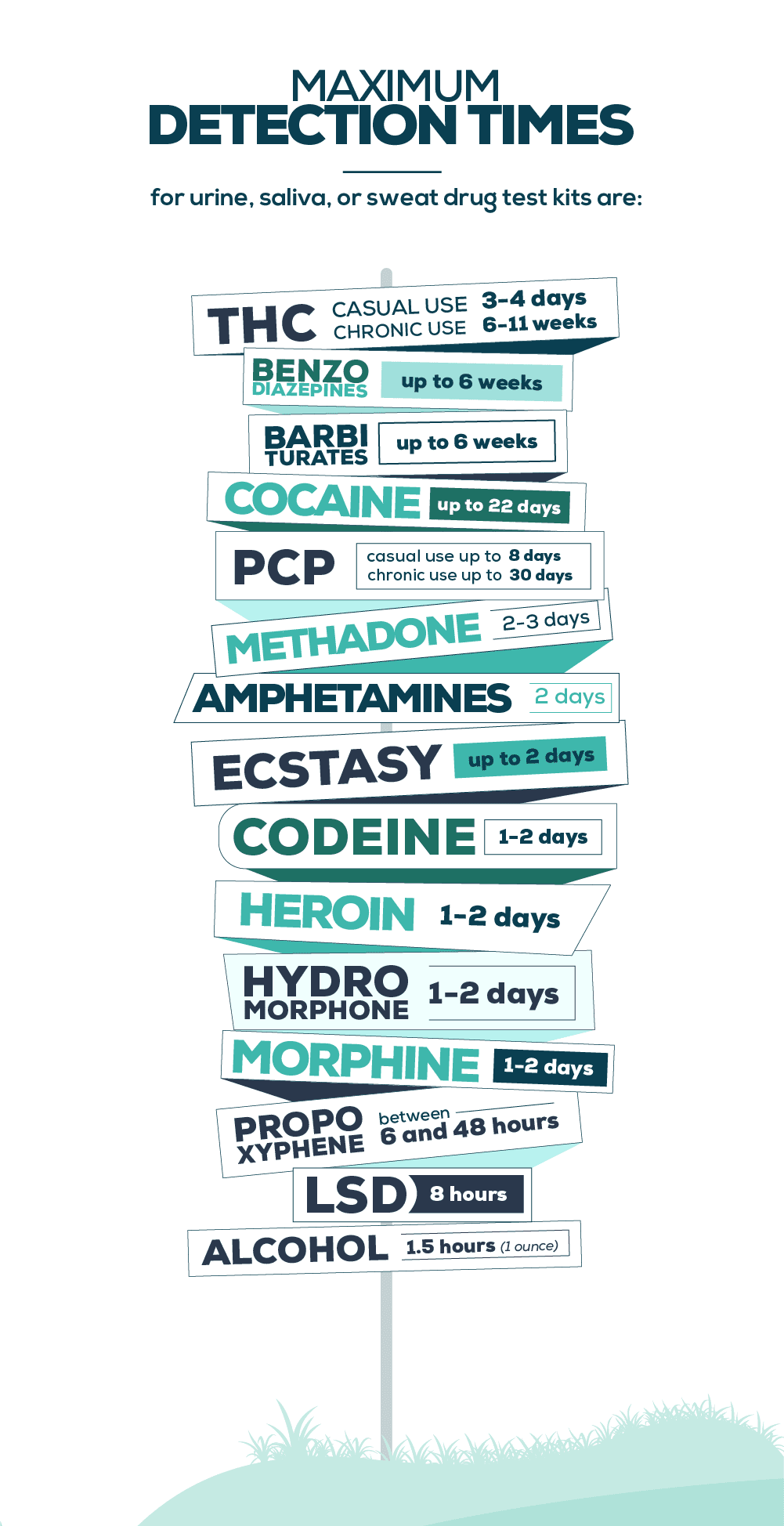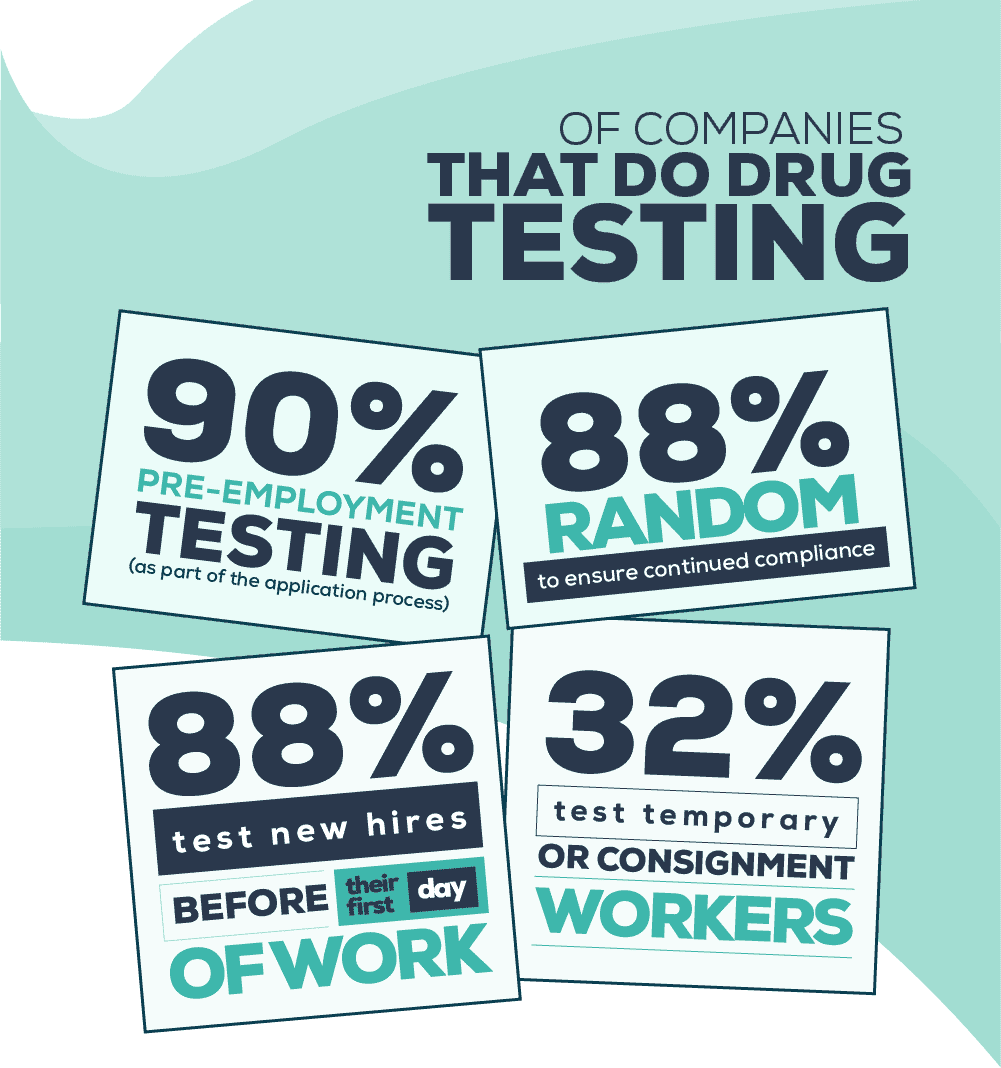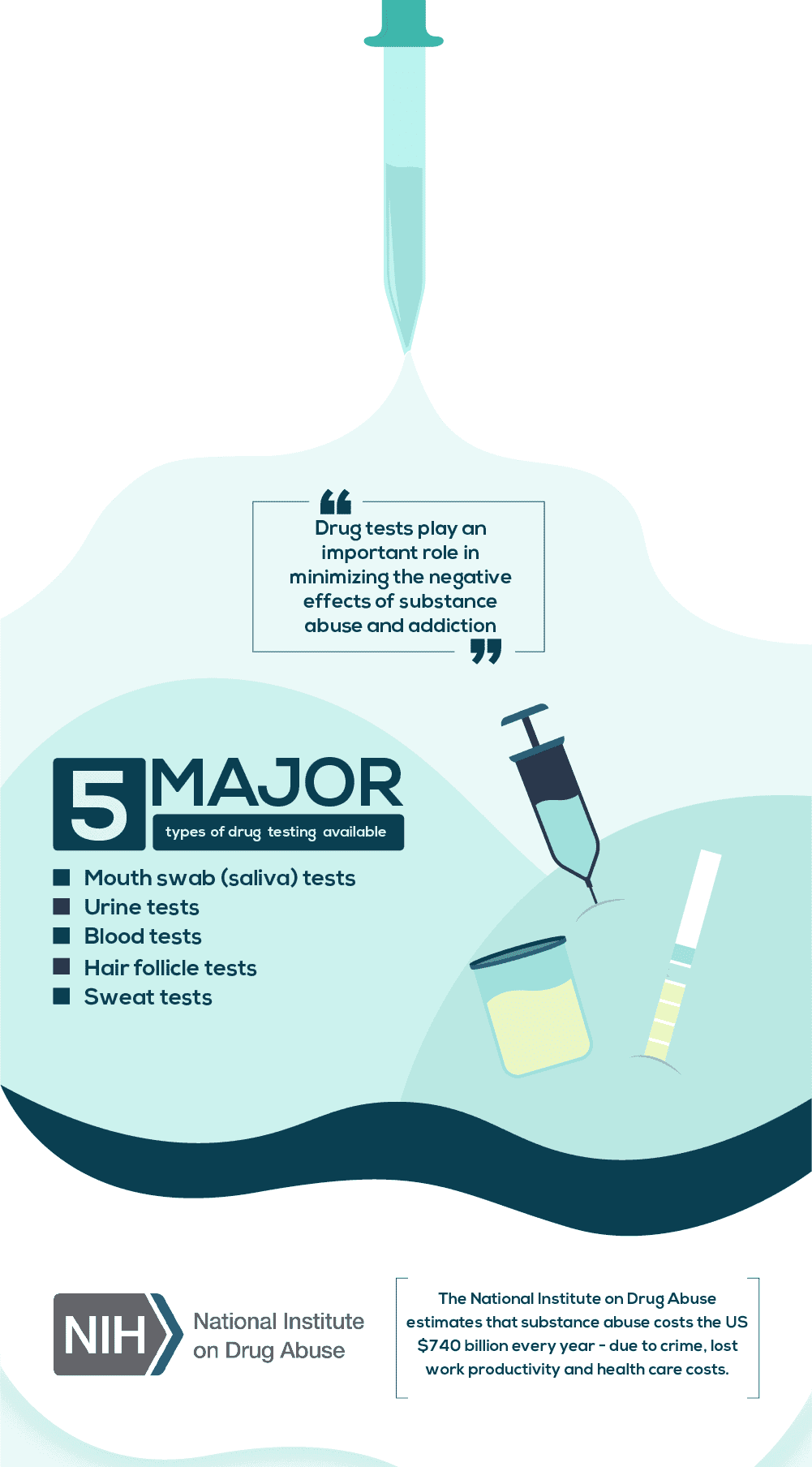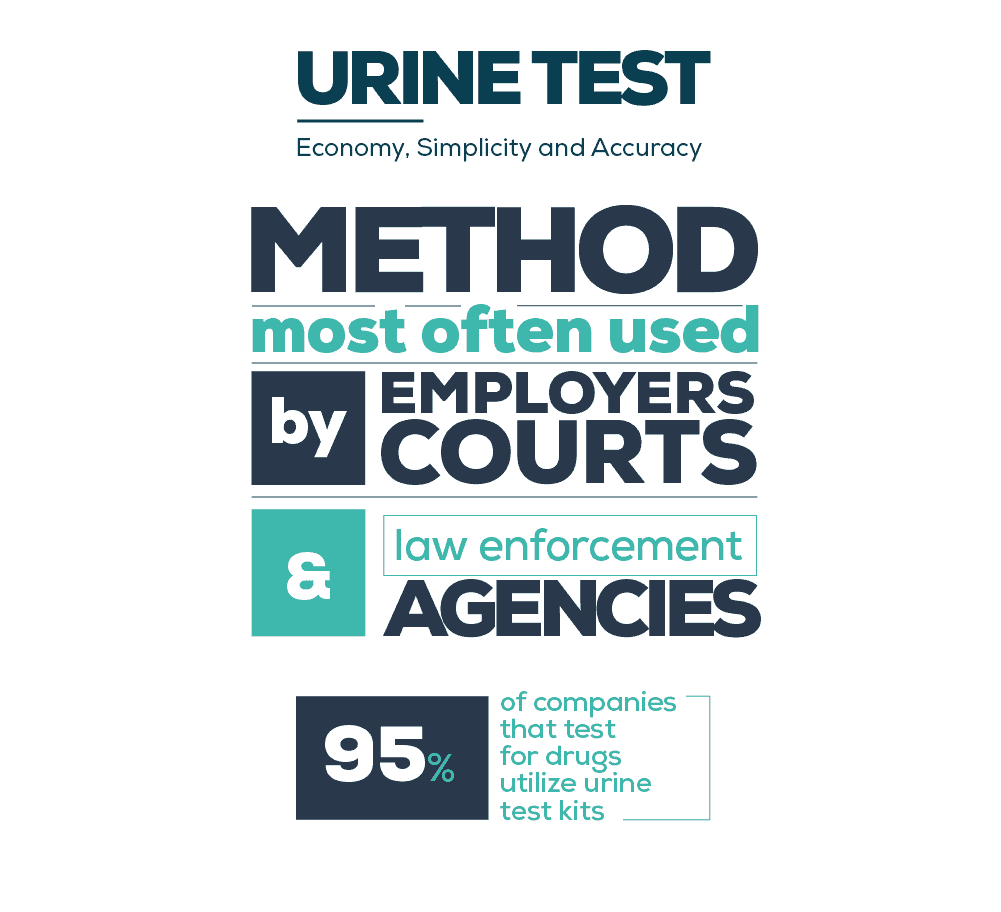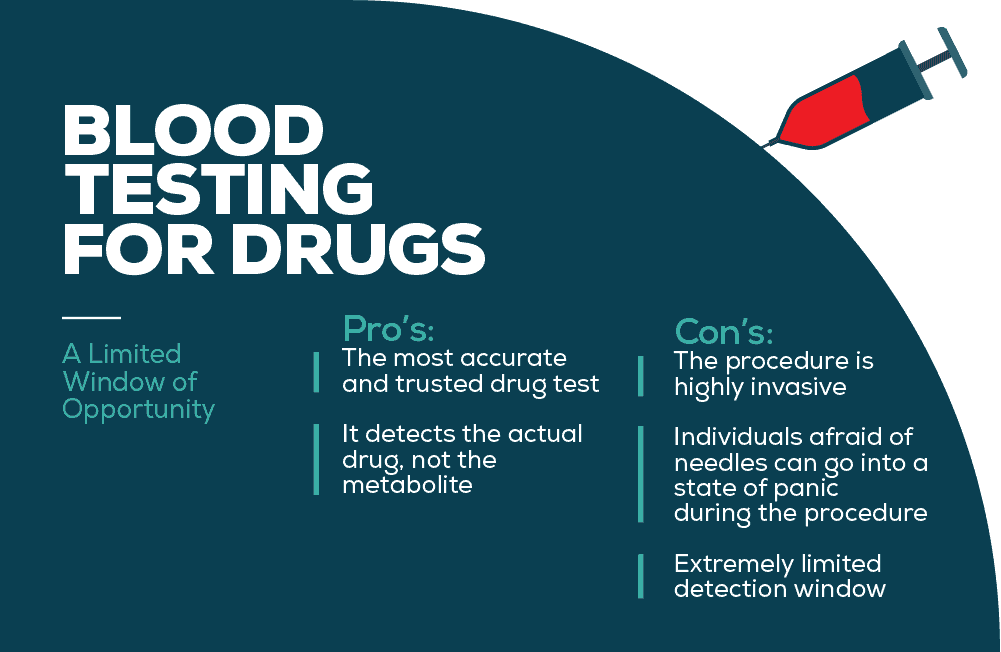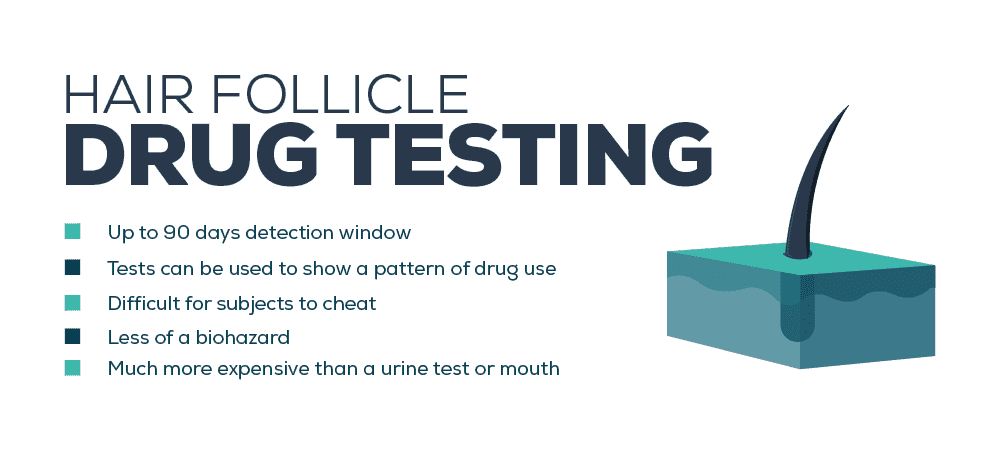Angelina Jolie is famous for her leading roles and humanitarian efforts – but that’s not all there is to the story. When she was younger, she took a deep dive into hard drugs as she rose to fame. Thankfully for everyone from her father Jon Voight to her adopted children, she came up from this darker place. The actress outlined her journey in a profile with 60 Minutes in 2011: “I went through heavier, darker times and I survived them. I didn’t die young. So I am very lucky. There are other artists and people that didn’t survive certain things … people can imagine that I did the most dangerous, and I did the worst…for many reasons, I shouldn’t be here. You just…too many times where you came close to too many dangerous things, too many chances taken too, too far.” ~ Angelina Jolie Angelina Jolie’s story highlights the importance of calling out drug addiction and abuse for the destructive habits that they are. The story also shows just how important drug tests can be in avoiding a similar path. It’s not melodramatic to say that drug tests can save lives.
“We treat both addiction and co-occurring disorders and accept many health insurance plans. Take a look at our residential program.”
Asking the Right Questions About Drug Testing
What is the cost of a drug test? How do they work? How common are they? If these are questions at the top of your mind, you’ve come to the right place. We are here to explain drug testing – the cost different types of tests, the devices used, the privacy offered and the accuracy of each drug test. 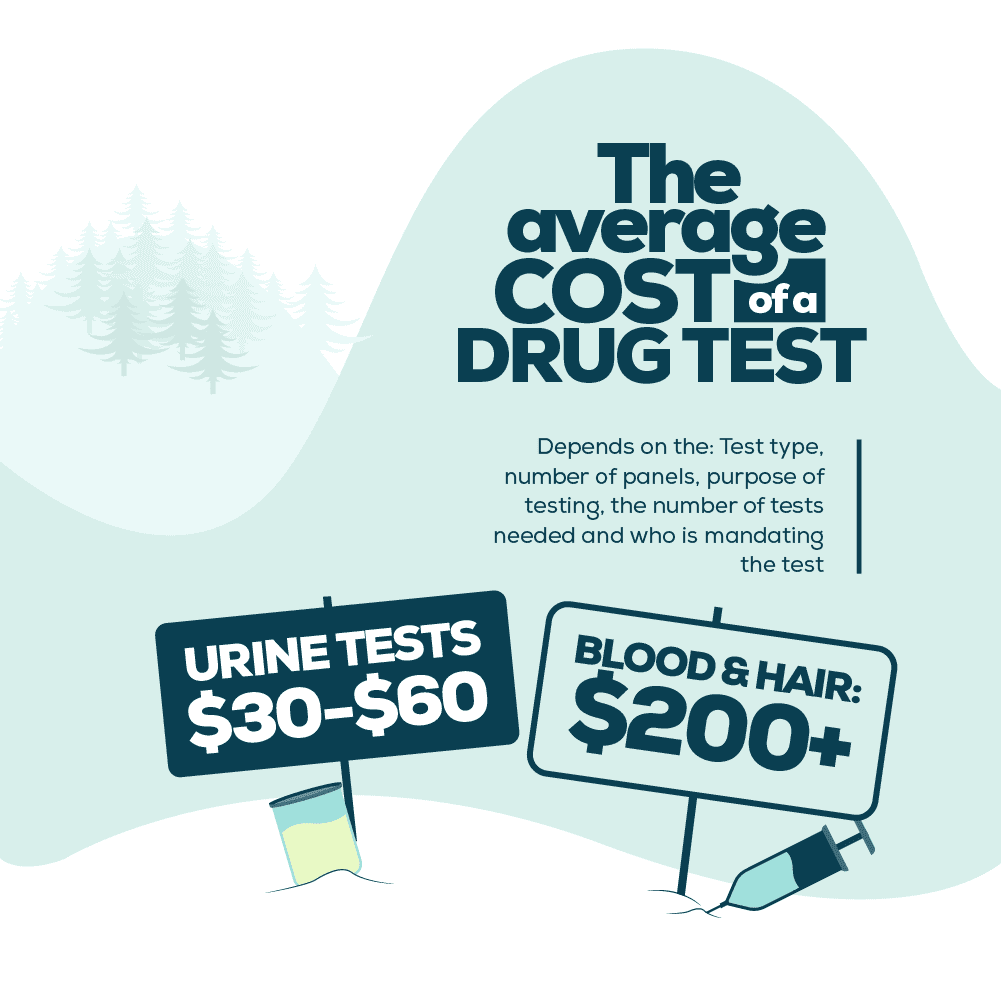 The Cost of a Drug Test The average drug test ranges from $30-$60 for urine tests to over $200 for blood and hair tests. The cost of a drug test depends on the test type, number of panels, purpose of testing, the number of tests needed and who is mandating the test. Keep reading for specific cost information based on these factors. Armed with answers to your questions, drug testing is sure to look more manageable – and important. As Mack Brown, former football coach and sports commentator for ESPN, famously said: “Most players don’t mind drug testing once they realize they don’t have to study for it.” Drug testing is a standard business practice for the vast majority of American companies. According to a 2013 human resources benchmark report, nearly 8 in 10 companies drug screen at least some of their employees.
The Cost of a Drug Test The average drug test ranges from $30-$60 for urine tests to over $200 for blood and hair tests. The cost of a drug test depends on the test type, number of panels, purpose of testing, the number of tests needed and who is mandating the test. Keep reading for specific cost information based on these factors. Armed with answers to your questions, drug testing is sure to look more manageable – and important. As Mack Brown, former football coach and sports commentator for ESPN, famously said: “Most players don’t mind drug testing once they realize they don’t have to study for it.” Drug testing is a standard business practice for the vast majority of American companies. According to a 2013 human resources benchmark report, nearly 8 in 10 companies drug screen at least some of their employees. 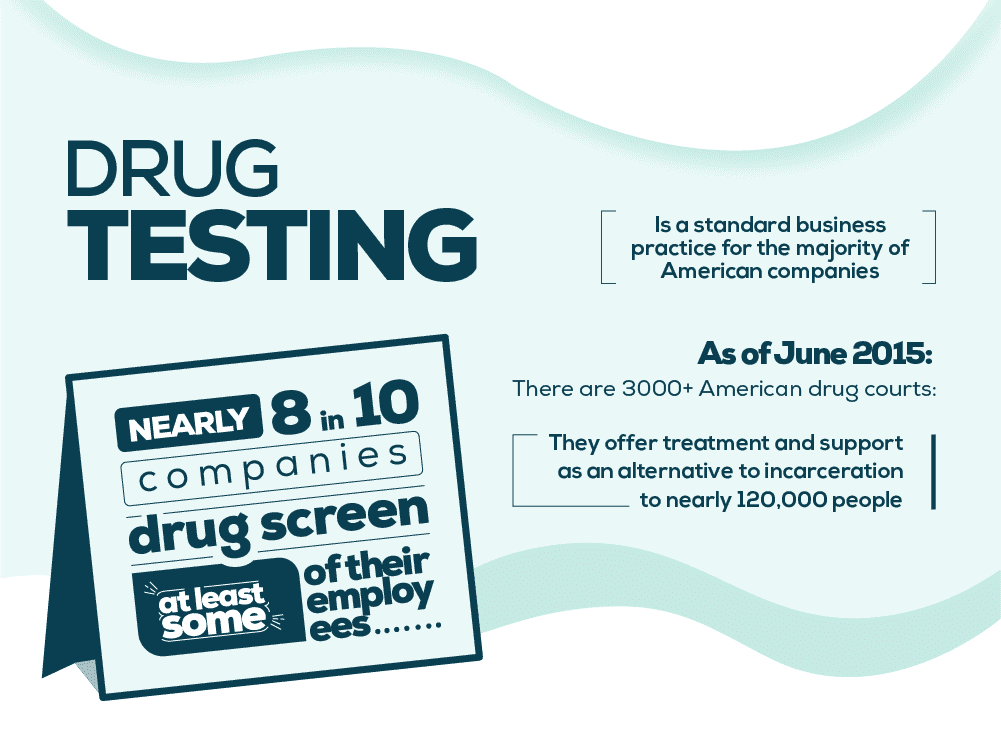 In addition, mandatory drug tests are the primary means of measuring compliance with drug court programs across the United States. As of June 2015, there are over 3000 American drug courts, and together, they offer treatment and support as an alternative to incarceration to nearly 120,000 people. Finally, law enforcement agencies use breath and blood tests to confirm or eliminate impairment when a person is suspected of driving under the Influence of alcohol or drugs. With numbers like that, it’s critical to understand the current drug testing environment. Whether you are a job seeker, an employer, an athlete or someone struggling with substance abuse, knowing how drug testing works and what drug tests cost is sure to relieve your anxiety. In this guide we jump into each of these uses for drug testing, along with the specific types of tests that are used. But let’s start with the basics: what is a “drug test”, anyway? From there we can jump into the specific drug test types and what they cost employees and employers.
In addition, mandatory drug tests are the primary means of measuring compliance with drug court programs across the United States. As of June 2015, there are over 3000 American drug courts, and together, they offer treatment and support as an alternative to incarceration to nearly 120,000 people. Finally, law enforcement agencies use breath and blood tests to confirm or eliminate impairment when a person is suspected of driving under the Influence of alcohol or drugs. With numbers like that, it’s critical to understand the current drug testing environment. Whether you are a job seeker, an employer, an athlete or someone struggling with substance abuse, knowing how drug testing works and what drug tests cost is sure to relieve your anxiety. In this guide we jump into each of these uses for drug testing, along with the specific types of tests that are used. But let’s start with the basics: what is a “drug test”, anyway? From there we can jump into the specific drug test types and what they cost employees and employers.
Drug Testing Basics: What, Why and How
Most people understand intuitively what a drug test is: a mechanism designed to detect traces of illicit drugs in the body’s system. Testing for these substances can take many different forms, from urine tests and ‘breathalyzers’ to hair follicle testing. The price tag associated with a drug test varies too – a the cost of an individual drug test for a prospective employee will look different than a large employer running randomized tests each year, for example. Regardless of the drug test cost or type, many people wonder why drug testing is so important for employees and employers. The answer may surprise you, as there is more than just one reason:
- Screening for substances makes for healthier and safer business environments.
- Drug screening can reduce the social and economic costs of drug abuse and addiction.
- Drug tests can help individuals consider the consequences of their actions and seek out the help they need for recovery.
- With the right approach, these programs can change the conversation from punishment and alienation to understanding and the importance of seeking out treatment.
Why Drug Tests Are Worth the Cost
In many cases, the idea behind drug testing is not necessarily to punish individual employees who are using or abusing drugs. Instead, the purpose of drug tests for some employers is simply to avoid harm to both employees and the entire organization. Put another way, failing a drug test early on in an addiction can be a wake up call for professionals who don’t have that area of their life under control. “For too long, we’ve viewed drug addiction through the lens of criminal justice. The most important thing to do is reduce demand. And the only way to do that is to provide treatment – to see it as a public health problem, and not a criminal problem.” ~ President Barack Obama, speaking at the 2016 National Prescription Drug Abuse and Heroin Summit President Obama’s words reflect the fact that treatment for substance abuse disorders is one of the essential health benefits included explicitly in the Affordable Care Act. The tide is slowly shifting toward addressing substance abuse and addiction at their roots. The National Institute on Drug Abuse estimates that substance abuse costs the United States $740 billion every year, due to crime, lost work productivity and health care costs. Why are drug tests worth the cost? The long and short of it is that drug tests play an important role in minimizing the negative effects of substance abuse and addiction. Employers may put drug testing into place for a variety of reasons, from workplace safety to the deterrence of drug use. Whatever the case, the idea is to benefit rather than harm.
How Drug Testing Works
Every drug test is designed to detect the presence of one or several substances in the body. Effective tests find ‘residue’ of the substance at the molecular level, so it is very difficult to fake a drug test. To understand how drug testing works, we have to jump into which substances are detected, how long they stay in the system and the concentration levels of each substance.
What Substances Are Detected by a Drug Test?
A “standard” 5-panel drug test detects:
- THC (marijuana, hash, and other cannabinoids)
- “Basic” Opiates (morphine, heroin, codeine)
- Amphetamines (ecstasy, methamphetamines, etc.)
- Cocaine (including crack)
- Phencyclidine (PCP)
In addition, an 8-panel drug test also looks for:
- Benzodiazepines (tranquilizing medications such as Xanax, Librium, Valium, etc.)
- Methaqualone/Quaaludes
- Barbiturates (“downers” such as secobarbital, phenobarbital, butalbital, etc.)
A typical 10-panel drug test detects all of the above, plus:
- Methadone
- “Complex” opiates such as Propoxyphene (the opioid Darvocet and other Darvon compounds), Oxymorphone, and Hydromorphone
Some companies offer a 12-panel drug test, which adds:
- Meperidine
- Oxycodone
Depending on the testing organization’s needs, drug testing kits can be customized to test for even more substances, including:
- More prescription opioid medications (hydrocodone, fentanyl, etc.)
- Some “Designer” drugs (Ecstasy, ketamine, or Rohypnol, for example)
- Synthetic cannabinoids (Spice, K2, etc.)
- Hallucinogens (LSD, Mescaline, “magic mushrooms”, etc.)
- Anabolic steroids
How Long Do Drugs Stay in a Person’s System?
Some drug screens only determine if a person is under the influence of a prohibited substance at the time of testing. Other drug test kits can detect if the person has used a substance at any point in the recent past. The MAXIMUM detection times for most commonly-used urine, saliva, or sweat drug test kits are:
- THC (the active ingredient in marijuana) – casual use 3-4 days, chronic use 6-11 weeks
- Benzodiazepines – up to 6 weeks
- Barbiturates – up to 6 weeks
- Cocaine – up to 22 days
- PCP – casual use up to 8 days, chronic use up to 30 days
- Methadone – 2-3 days
- Amphetamines – 2 days
- Ecstasy – up to 2 days
- Codeine – 1-2 days
- Heroin – 1-2 days
- Hydromorphone – 1-2 days
- Morphine – 1-2 days
- Propoxyphene – between 6 and 48 hours
- LSD – 8 hours
- Alcohol – 1.5 hours (1 ounce)
“Get your loved one the help they need. Our substance use disorder program accepts many health insurance plans, this is our residential program.”
What Are the Concentration Cutoff Levels for Drug Tests?
A drug test is positive if the amount of the substance detected with the drug test kit exceeds predetermined cutoff levels. If the initial urinalysis, the EMIT, is positive, then it is laboratory-tested again via gas chromatography and mass spectrometry, or GC/MS, for confirmation. This confirmatory test often has an even lower threshold than the first. As established by the guidelines of the Substance Abuse and Mental Health Services Administration, here are the detection thresholds for various drugs:
- Marijuana metabolites: Initial- 50 ng/ml, Confirmatory- 15 ng/ml
- Opiate (codeine and morphine) metabolites: Initial- 2000 ng/ml, Confirmatory- 2000 ng/ml
- 6 Acetylmorphine (heroin): Initial and Confirmatory- 10 ng/ml
- Phencyclidine (PCP): Initial and Confirmatory- 25 ng/ml
- Amphetamines/Methamphetamines: Initial- 500 ng/ml, Confirmatory- 250 ng/ml
- MDMA (Ecstasy): Initial- 500 ng/ml, Confirmatory- 250 ng/ml
- Cocaine metabolites: Initial- 150 ng/ml, Confirmatory- 100 ng/ml
Drug Tests at Work
Because businesses have the legal right —and the explicit responsibility —to demand and provide a safe workplace for every employee, customer, visitors, and vendor, most companies have drug testing policies in place. Employers may screen new hires, employees with a safety responsibility or randomly screen any number of employees. Here are a few ways drug tests at work take shape:
- Pre-employment (as part of the application process)—90% of companies that drug test
- Random (to ensure continued compliance)— 88% test new hires before their first day of work, 71% require drug screens of current workers, and 32% do so with temporary or consignment workers
- Reasonable cause (suspicion of on-the job impairment, excessive absenteeism, etc.) – 61%
- Post-accident (property damage or injury) – 59%
- Return-to-work (after accidents or drug/alcohol rehab)
- Follow-up (for a specified period of time)
In addition, 1 out of 25 companies require a drug panel when an employee is transferred or promoted.
Why is Workplace Drug Screening Necessary?
Workplace drug screening is relatively common – according to one study, around 80% of employers screen regularly for illicit substances. It is in a company’s best interest to ensure that its employees are not using drugs. Benefits of drug screening include:
- Lowered absenteeism (drug users are 10X more likely to miss work)
- Less downtime
- Decreased theft
- Fewer accidents and Workers Compensation claims (drug users are more than three-and-a half times more likely to have a work-related accident and 5X more likely to file a Workers Compensation claim)
- Increased retention
- Greater production (Drug users are 33% less productive)
- Higher morale (97% of Fortune 500 companies test)
- Reduced employee healthcare costs
What Kinds of Jobs Require Drug Screening?
Because drug testing works as a safety measure for employers and employees, the practice is common in many different fields and industries. At the same time, companies in certain fields are legally required to screen for drug and alcohol use. According to The Balance Careers, these include transportation, safety, defense, transit and aviation industries. While not typically required by law, other sectors that tend to normalize drug screening include media companies, hospitals, universities and schools. Anyone applying to government positions (at the federal, state and county levels) are also often required to submit a drug test. Of course, testing for drug in sports is a must. Drug screening programs in both university programs and professional leagues is the norm. While each league has its own standards, most follow strict drug policies.
Drug Tests for HR – What They Cost Companies
For companies looking to implement drug testing across their organization, the practice does not have to be overly expensive. According to poll results from SHRM, over 80% of employers spent under $50 per test, per employee. Half that number said drug testing costs them less than $30 per employee. Of course, how much drug tests cost companies depends entirely on the size of the organization. For a SMB of 30 employees, for example, a fully implemented drug screening program would cost around $2,000 each year:
- $50/test x 30 employees = $1,500
- $50/test x 6 for random testing of 20% of employees = $300
- $50/test x 3 for new hires = $150
- Total = $1,950
Of course, this cost is outweighed by the potential of bigger organizational costs: worker turnover, absenteeism, a loss of productivity and workers’ compensation claims. Drug screening is a worthy investment – and often the right thing to do.
Court-Ordered Mandatory Drug Testing
Sometimes drug testing is a legal requirement mandated by the government instead of employers. There are several reasons why a judge might order mandatory drug testing:
- Child custody or Child Protective Services cases where one or both parents have a history of substance abuse
- In criminal cases where drugs were a factor – DUIs, vandalism, theft, fraud, possession, etc.
- Cases where incarceration isn’t an appropriate first sentencing option
- As a condition for probation or parole
- To ensure compliance with treatment recommendations
Suspected DUI Alcohol Testing
When a driver gets pulled over and the officer suspects the influence of alcohol or drugs, a series of Field Sobriety Tests will be given. This 3-test battery was developed by the US National Highway Traffic Safety Administration. If in the officer’s opinion, the driver shows impairment during the FST battery, more scientific testing methods are used. On-site, a breathalyzer test can be given to determine Blood Alcohol Content (BAC) from a breath sample. One common misconception about an alcohol breathalyzer is that it directly measures the concentration of alcohol in the blood. It does NOT. Rather, the breathalyzer provides an estimate of blood alcohol levels. The BAC limits for most states are:
- .08 for regular drivers
- .04% for commercial drivers (tractor-trailers)
- .01% for drivers of common carriers (passenger buses, planes, taxis, etc.)
- ZERO TOLERANCE for anyone not of legal drinking age
If an arrest is made, other tests will be conducted to confirm the driver’s blood alcohol level. The consequences of receiving a DUI as a result of a high BAC are often detrimental one’s professional and personal life.
Suspected Marijuana DUI Testing
Now that recreational marijuana is legal in more states, upgraded technology was needed that could detect the presence of cannabis in the blood. In 2016, an Oakland company, working together with the University of California at Berkeley, developed a “breakthrough” breathalyzer that could test for both alcohol AND marijuana. Early last year, drivers in California were the first in the country to be tested with the new equipment. The device can accurately determine a timeframe “window” during which marijuana was consumed. This is believed to be a better indicator of probable impairment. The dual-purpose breathalyzer can even detect marijuana edibles like candy or pastries. Many of the states where recreational marijuana has been legalized have a “per-se” limit of THC blood concentration, setting a threshold at which there is a legal presumption of impairment. Depending on the state, this threshold can range from as low as 2.0 ng/ml to as high as 5.0ng/ml. Some states have no established THC level that definitively proves impairment. Instead, the Court relies on independent evidence—erratic driving, failed FST, etc. As with alcohol, if an arrest is made for a marijuana DUI charge, subsequent drug tests will be conducted to determine the presence and/or level of THC in the driver’s blood. Marijuana laws are in a state of flux, so make sure you check your state’s regulations and if this new version of a breathalyzer is being used.
The Five Types of Drug Screening
Drug testing is not one-size-fits-all. The mechanics of a drug test depend entirely on what kinds of drugs are being tested for and what methods are used. There are five major types of drug testing available:
- Mouth swab (saliva) tests
- Urine tests
- Blood tests
- Hair follicle tests
- Sweat tests
While each device is used to detect substance use, they have their own set of benefits and potential limitations. Some are best suited for specific drugs, while others provide a cost-effective means for companies to implement testing across their workforce. To help you decide which may be best in your context, consider the following breakdown.
Mouth Swab Drug Detection – A New Anti-DUI Tool
In March 2017, the San Diego Police Department joined Los Angeles as the second California city to use an on-site device to determine the presence of drugs, simply by using a saliva sample. The Dräger 5000 analyzes saliva samples obtained via a mouth swab, and in a matter of minutes, it can deliver a “positive” or “negative” result for 7 different kinds of drugs:
- Marijuana
- Opioids
- Methadone
- Methamphetamines
- Amphetamines
- Benzodiazepines
- Cocaine
Although not yet in universal use, the Dräger 5000 is gaining in popularity among law enforcement officials. Already, it is used in about a dozen US states, as well as in Europe and Australia. The Dräger 5000 does NOT determine blood levels or impairment, only if a drug present. However, a positive result—or a refusal—will allow police officers to compel a blood test to obtain more defined results. Other common forms of mouth swab tests include Intercept, T-Cube and Oratect. Saliva Drug Screening Cost Many saliva tests are lab-based – meaning users simply swab their mouths and then send the sample in to be professionally tested. This makes saliva tests one of the most user friendly devices, with many straight-to-consumer options available. They are generally more expensive than ‘pee tests’, but cheaper than other options. A search of the common options revealed a range of prices – for example, $5-10 for mouth swab strips from retailers for single panel, to $69 for a 5-panel lab-provided saliva test. This type of screening is associated with a number of benefits, including:
- It’s quick! Some tests only take 5 minutes.
- The test can be given by nearly anyone (minimal training required)
- Long shelf life: 18-24 months
- Small size – about the size of a toothbrush!
- Can be handled directly by the test subject
Urine Test – Economy, Simplicity and Accuracy
Also referred to as a “pee test” (or more off-color as a “piss test”), this is the drug testing method most often used by employers, the Court, and law enforcement agencies. Specifically, 95% of companies that test for drugs utilize urine test kits. Urinalysis drug testing does not detect the actual parent drug. Instead, it looks for metabolites – the byproducts that remain after the body has processed the drug. Benefits to urine drug testing kits include:
- Trust – highest likelihood of reliable results
- Low cost—$50-$80 for a laboratory test
- Simple—Can be administered and instantly evaluated on-site by trained company staff or sent off to a lab for a more detailed analysis/confirmation
- Rapid results – usually available within hours
- Established protocols
- Greatest selection of drug panels
- Stands up in Court
However, for all of those positives, drug uranalysis tests do have several inherent problems:
- Detects usage, not impairment
- Viewed by some as embarrassing
- Creates a biohazard – specimen handling, shipping, etc.
- Limited detection window – typically, less than a week
But by far, the biggest “con” associated with urine screening is that it is the easiest test to cheat – by substituting, adulterating, or diluting the sample. An entire industry has sprung up with advice, supplements, and even devices that will supposedly help people in not in compliance pass their drug panel. Urine Drug Screening Cost Urine drug tests are generally the cheapest option for substance screening – Amazon carries one brand that runs just $11 for a five pack, five panel test that can be easily completed at home. This is also why urine tests are the screening device of choice for the vast majority of companies. A lab-run pee test is more expensive, but still one of the most cost-effective solutions. Depending on the lab, they can run between $49 and $80 for a 10-panel test. Going through a lab may help verify results for employer-mandated drug testing.
Blood Testing for Drugs – A Limited Window of Opportunity
A blood drug test is by far the most accurate, because it detects the actual drug, not the metabolite. The sample is drawn by a professional, eliminating any chance of cheating on the subject’s part. As such, blood, drug panels are the most-trusted type of drug test, and the results will stand up in court. Of course, there are drawbacks. Critics of blood testing for drugs argue that the procedure is highly invasive – requiring extraction from a vein. Individuals who are afraid of needles can literally go into a state of panic during the procedure. But the biggest problem with drug testing via blood samples is the extremely limited detection window. For example, a casual marijuana smoker will test negative within about 6 hours. Even heavy pot smokers can have marijuana disappear from their system in as little as one day. Blood test time limits for other drugs are:
- Amphetamines: 10-14 hours
- Methamphetamines: 24 hours
- Barbiturates: 24-48 days
- Benzodiazepines: 6-48 hours
- Cocaine: 12-24 hours
- Codeine: 6-12 hours
- LSD: As little as 3 hours
- PCP: 12-24 hours
Blood Drug Screening Cost Blood testing is considered the most reliable form of drug testing, but it is also considered the most expensive – and intrusive. The reliability comes with a higher price tag. For example, one national direct-to-consumer lab prices a 10 panel blood test at $279, with a turnaround time of 5-8 days. As with other mechanisms, the cost of screening depends on the substances you are testing for – the panel. Other labs range between $85 for a single substance (such as THC or cocaine) and over $200 for an 8-10 panel test.
Hair Follicle Drug Testing – Detecting Patterns of Use
Some circumstances call for a hair follicle drug test – looking for drug use over a longer period of time, for instance. This is when a small sample of hair is tested for drug metabolites. Typically, hair from the head is used, but body hair can be substituted if the subject is bald or has shaved their head to try to get around the test. Follicle drug tests are at least as accurate as urine tests, and present several benefits:
- The detection window is much longer – up to 90 days.
- This means the test can be used to show a pattern of drug use.
- Because the test is observed, making it harder for the subject to cheat. Not even shampoo, dye, or bleach will affect the test results.
- Because it does not use bodily fluids, it is less of a biohazard.
However, there are a few negatives to a hair follicle drug test. The biggest drawback is that a follicle test does not show current impairment or drug levels. It takes between 5 and 10 days after drug use for the new hair to grow out of the scalp. The turnaround time to obtain results is also longer, up to 2 weeks. Hair Follicle Drug Screening Cost A hair drug test is another more expensive option – much more expensive than a urine test or mouth swab test. At-home kits can range between $65 and $85, while lab or hospital tests usually run over $100. Some employers consider the cost worthwhile because of the flexibility of the timeframe. Of course, most employers pay for these tests if they are required – and are required to compensate employees for their time spent on the screening.
Sweat Drug Testing – Continuous Monitoring
Recent technological advances have made a testing option first introduced in the early 1990s more viable today. It is possible to test a subject’s sweat for the presence of alcohol or drugs. The most well-known transdermal testing device is the SCRAM bracelet – Secure Continuous Remote Alcohol Monitoring. Designed to be worn continuously, 24/7, this electronic ankle bracelet is designed for high-risk alcohol offenders. Continuous Alcohol Monitor (CAM) devices work by detecting alcohol ‘secreted’ through the pores via sweat. They are so sensitive that wearers must even change their personal hygiene products – no colognes or mouthwashes that contain alcohol, for example. In other words, if a wearer drinks any alcohol at all, it WILL register on the testing device. Because the wearer cannot drink without being detected, CAM devices are strong deterrents. The SCRAM manufacturer boasts that “99.3% of SCRAM days are sober days”. Currently, there is no electronic device that will continually test for drugs. However, there are “sweat patches” that are designed to be worn continuously for 7 days, removed, and sent off for drug analysis. They are waterproof, tamper-resistant, and even stay on through showers, exercise, or swimming. These noninvasive round-the-clock drug tests are gaining in popularity because they expand the detection window significantly. Sweat patches do more than give a brief snapshot —they provide a much more complete picture. This makes them useful for treatment programs, re-entry programs and court mandates. The biggest caveat associated with transdermal drug testing is that this method registers a higher incidence of false positives than other methods. Part of the reason is because drugs can be stored in bodily tissues for period of time after actual usage. Sweat drug testing may detect previous usage, rather than current abstinence. Sweat drug or alcohol tests are also vulnerable to outside contamination that can invalidate the results. Sweat Drug Screening Cost After mouth swabs and urine strips, sweat patches are one of the less expensive screening options available – especially considering the length of wear and durability. Pricing is usually available upon request, but one vendor sells the monitoring patch for $46. To account for the monitoring element, some labs charge an enrollment fee (per person) accompanied by a daily monitoring charge.
“We accept many health insurance plans. Get your life back in order, take a look at our residential program.”
The True Cost of a Failed Drug Test
It’s no secret that failing a drug test can easily translate into negative consequences in your personal and professional lives – not to mention in your finances and mental health. Some of the costs associated with a failed drug test due to substance abuse include:
- Loss of employment (or scholarship in university)
- Broken or strained relationships
- Lack of trust from others
- Legal consequences (especially for a DUI or urine tests in some sectors)
- Financial consequences (i.e. for rehab requirements)
- Health and mental effects
- Health care costs for treatment
If you are currently employed, be sure to review your company’s drug policy and testing procedure. Knowing this information ahead of time can help you if you need assistance in dealing with a drug or alcohol problem. It’s always best to know what you’re getting into! But a failed drug test can also act as a wake up call. Remember that drug addiction or alcohol abuse doesn’t have to be the last step. Recovery opens up the opportunity for a next step, and another one after that. Check out Ben Affleck’s words on how finding support can help you avoid the cost of a failed drug test: “I want my kids to know there is no shame in getting help when you need it, and to be a source of strength for anyone out there who needs help but is afraid to take the first step. I’m lucky to have the love of my family and friends, including my co-parent, Jen, who has supported me and cared for our kids as I’ve done the work I set out to do.” If you are struggling with alcoholism or drug abuse, don’t let it reach the point of failing a drug test! You have professional help available to you.
What to Keep in Mind About Drug Testing
Just as Angelina Jolie learned early on in life, avoiding the devastating effects of substance abuse and addiction is all about asking the right questions. It means asking what is important to you – what matters most in your life? It also means taking steps to ensure that addiction doesn’t take over your life. That’s where drug tests can come in. If you’re looking for the TL;DR version of this guide to drug testing basics, then consider the following points:
- Drug tests serve an important purpose for both employees and employers. Effective tests translate into safer work environments and a kind of screening for substance abuse.
- The cost of drug tests depends on the type of test, who is paying for it, and how many panels (or substances) you need to test for. On the low end (for urine tests and mouth swabs) tests can cost $30-$60. Blood and hair tests will cost significantly more.
- There are five types of drug tests: saliva, hair, blood, urine and sweat. Each type has its own set of benefits and costs (see above).
The biggest takeaway is this – like it or not, drug tests are a fact of modern-day life. Whether it is because of your job, an automobile accident, a traffic violation, an insurance physical, or a divorce, the chances are very high that you will be required to take one at some point. The second takeaway is that it is a waste of time to attempt to fool a drug test. Testing options and technology continue to improve, making it that much harder to beat the results. One of the primary symptoms of a substance abuse problem is usage despite of negative consequences. If you find yourself worrying about your ability to pass a drug test, then perhaps you need to re-examine your relationship with drugs and alcohol. Are you looking for more answers about what failing a drug test means for your life? Don’t hesitate to contact us today for information about your treatment options. If you have more questions or insight about drug testing basics, feel free to leave a comment in the section below.
What Did you Think About This Blog?
Give it a Rating!
[kkstarratings]

